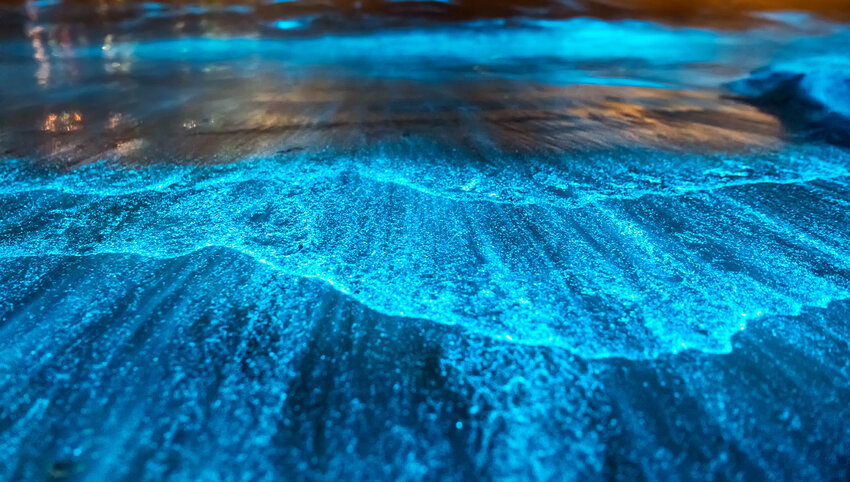Bioluminescence is one of Earth’s most unique natural wonders. Found all over the globe, this radiant phenomenon alights natural formations like caves and shallow bays with sparkling light. Most bioluminescence is created by a type of microscopic organism called a dinoflagellate that emit light when disturbed, giving off a soft glow in shades of both blue and green. Be sure to schedule your bioluminescent viewing during a new moon, when the phytoplankton's soft glow won’t compete with the brilliance of lunar light. Here are five of the best places to see bioluminescence around the world.
Mosquito Bay - Puerto Rico
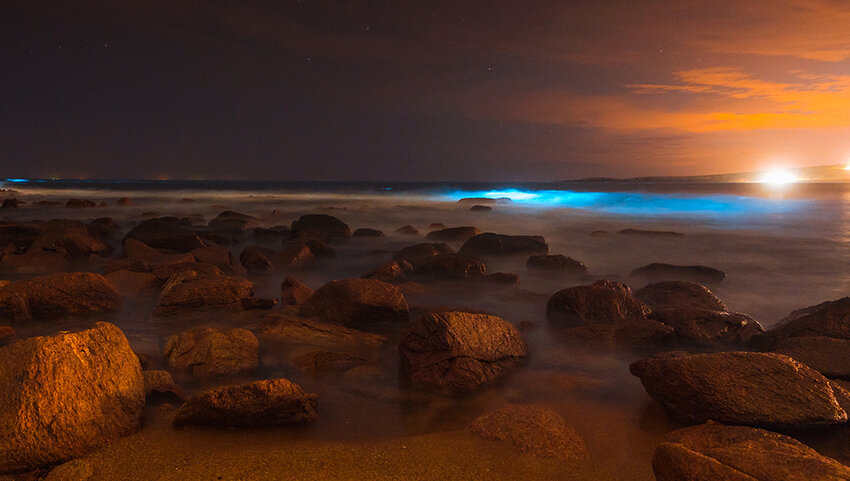
Possibly the best location in the world to witness bioluminescence, Puerto Rico’s Mosquito Bay is renowned for its particularly robust illumination. According to the Guinness Book of World Records, Mosquito Bay has the brightest bioluminescence in the world, and can be found on the island of Vieques, just off the east coast of the main island. The best time to see the glow is from June to November when the sea is warm and the plankton are happy. The island of Vieques is a destination in and of itself and a great place to explore with both black and white sand beaches, turquoise water, and swaying palm trees. While there are many areas in Puerto Rico where travelers can witness bioluminescence, Mosquito Bay is undoubtedly the best.
Vaadhoo Beach - Maldives
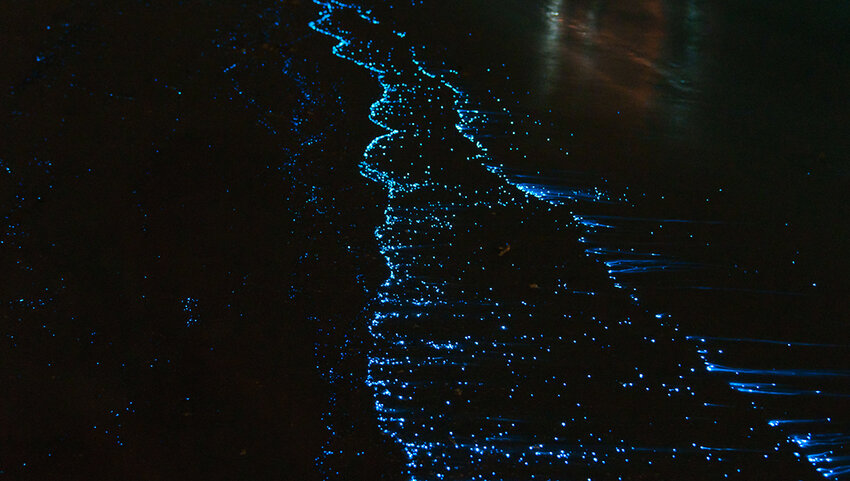
Across the Maldives' sun-drenched shores are numerous opportunities to spot bioluminescence. One of the most predictable falls from June to October at Vaadhoo Beach on the Raa Atoll. Known as the Sea of Stars, the aqua glow along this beach comes from dinoflagellates. Getting there is just half the adventure. Take a domestic flight from Ifuru Airport from the main island of Malé before grabbing a speedboat to your final destination in the country’s northern stretches. Although Vaadhoo is known as being one of the best places to see bioluminescence in the Maldives, technically it can occur anywhere along this string of atolls.
Toyama Bay - Japan
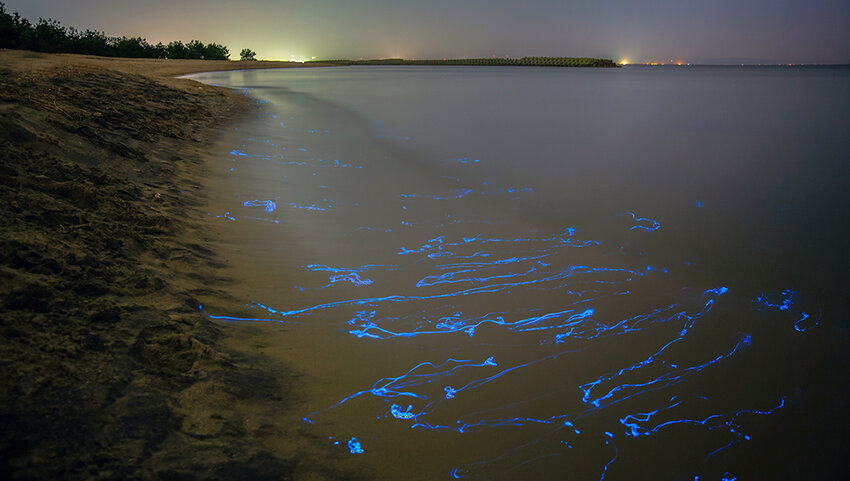
Come spring and early summer, Japan’s Toyama Bay radiates light from the firefly squid, tiny cephalopods with photophores at the end of each tentacle, that emit the same bioluminescence you’ll see in phytoplankton. Although this type of squid is found across Japan, the special V-shaped canyon located in Toyama Bay causes a current that brings these miniscule sea creatures closer to the surface from their typical dark depths. March to June is prime firefly squid season when fishermen pull in these tiny creatures in their nets. Visitors can organize a boat tour to witness their blazing blue hauls. Hop aboard a high-speed train from Tokyo to connect to the city of Toyama, located only a three hour ride away on the main island of Honshu, to see this azure show.
San Juan Islands - Washington, USA
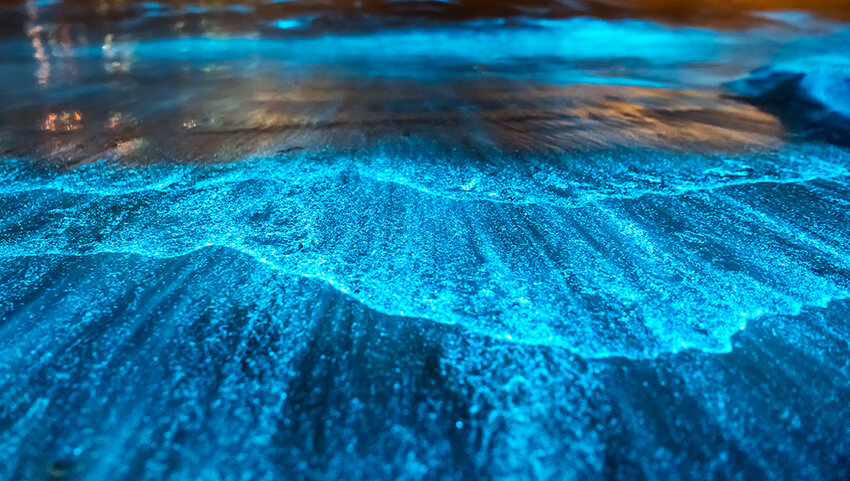
Washington state's San Juan archipelago is a diverse wildlife wonderland in the Pacific Northwest. From June to August it’s possible to see bioluminescent plankton in the Salish Sea, the waters that surround islands. Bright, sunny days invigorate these microscopic creatures which you can experience via sea kayak. Watch as each dip of your paddle comes alive, dripping with an otherworldly, phosphorescent shimmer. Most kayak tours leave from one of the many bays on San Juan Island itself. Aside from the beautiful glow you may also catch a glimpse of a pod of orcas or sea otters while you’re out on the water, making for an endless stream of magical moments.
Waitomo Caves - New Zealand
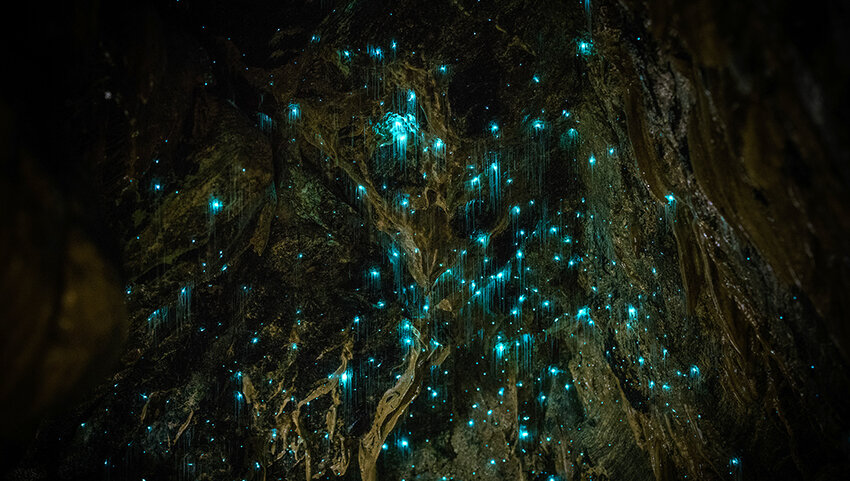
Peering up at this cathedral of illuminated caverns will most certainly elicit wondrous “ahhs” and “oohs.” Tucked away on New Zealand's North Island, are the Waitomo Caves which are home to glow worms, scattered along the grotto’s roof like thousands of tiny stars. Glow worms tend to be found in moist, damp, and dark places which is why they love caves but can also be found in dense forests and along river banks. The coolest thing about these glow worms is that they emit bioluminescence year-round. No waiting for the perfect conditions. Only three hours drive from Auckland, visitors will be delighted by the serene boat ride needed to reach these brilliant bugs.

